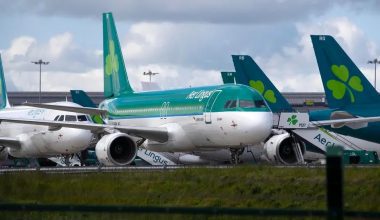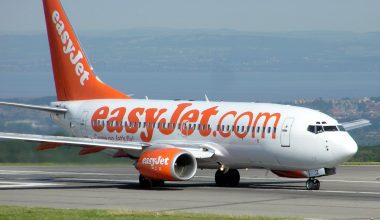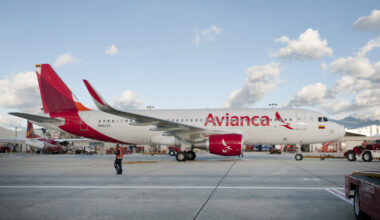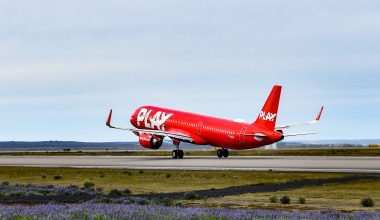Over the years, Airbus -the European aerospace giant, has mastered the art of manufacturing innovative aircraft with cutting-edge aerodynamics and design. One of its iconic aircraft designed to shape the future of air travel and be a game changer in large widebody operations is the twinjet Airbus A350. The aircraft is proving fit for a sustainable future with a clean-sheet design, advanced aerodynamics, and efficient large aero-engine. Why is A350 so special? How is it different from other aircraft? Who are A350 operators? Let’s delve further to learn about the revolutionary long-haul passenger aircraft: Airbus A350.
Also Read: Airbus to launch first light weight A350 freighter
Introducing Airbus A350
Airbus A350 is a long-range, widebody twinjet that first entered commercial service with Qatar Airways on 15 January 2015. Powered by the world’s most efficient large aero-engine Trent XWB turbofan engines, A350 is one of the top engineering successes of modern times. It is the ultimate result of Airbus’ years-long innovation and commitment to shaping the future of long-haul travel in terms of sustainability, profitability, and passenger comfort.

Featuring a new fuselage designed around a nine-abreast economy cross-section, the nimble, twinjet A350 family includes two main variants: A350-900 and Airbus A350-1000. The A350-900 jet has a range of 15,372km (8,100nmi) and accommodates 300-350 passengers in a standard three-class configuration. A350-1000 is the longest fuselage A350 family member flying efficiently on everything from short-range segments to ultra-long-range routes of up to 16,112km (8,700nmi) with 350-410 passengers onboard in a standard three-class configuration.
Why is Airbus A350 so special?
The state-of-the-art A350 is ground-breaking and special in so many aspects; it is built with carbon-fiber-reinforced plastic and other advanced materials to improve fuel efficiency and environmental footprint; it has a blended winglet design that morphs and changes shape in flight for optimal efficiency, and it has an innovative Airspace TM design for an exclusive in-flight passenger experience.
A350 is special because it is equipped with two Trent WXB turbofan engines, which allows it to burn less fuel than its predecessors and serve longer-range routes of up to 8700nm non-stop, connecting emerging markets, such as Shanghai-Boston or Paris-Santiago, in addition to traditional flight routes as Dubai-Melbourne. Using lighter and robust airframe materials gives Airbus A350 a unique weight delta advantage against its most direct competitor. It makes it more fuel-efficient, less prone to fatigue and corrosion, and easier to maintain. Similarly, its revolutionary adaptive wing design-inspired by birds- plays a massive part in A350’s aerodynamic gains as it morphs while airborne for maximum aerodynamic efficiency throughout different phases of the journey.
Airbus A350 introduces a greener way to fly with minimal carbon and noise footprint. With fuel consumption reduced to only 2.5 liters of kerosene per passenger per 100 km flown, A350 saves 25% more fuel than its nearest competitor, reducing harmful environmental effects. On the other hand, A350’s cabin is the quietest on a twin-aisle aircraft, with a 50% smaller noise footprint than comparable aircraft types.
What is special about A350 for passengers?
A350 is special for passengers because they can explore far corners around the globe comfortably in a true feeling of spaciousness, with wide seats, high ceilings, and alluring ambient lighting. Even on the longest of flights, passengers will feel relaxed and refreshed due to the quietest twin-aisle cabin, spacious seats, and elegant LED ambient lighting that adds to the interior beauty while reducing jet lag effects. The long journeys pass quickly with the most modern in-flight experience, including a wide array of on-demand movies and integrated Wi-Fi connectivity. Airbus A350 aircraft has cutting-edge cabin technology that offers the highest possible air quality with optimized cabin altitude (6000 ft) and optimum temperature and humidity for passengers.
What’s special about Airbus A350 for operators?
When burgeoning fuel costs are wreaking havoc on carriers’ financial performance, Airbus A350 seems ideal for operators to make a clean start toward a more profitable future. The combination of light airframe materials, the latest aerodynamics, and efficient engine technology culminate in improved fuel efficiency and lower airline maintenance costs. The carbon fiber reinforced polymer (CFRP) making up most of A350’s airframe is durable and more resistant to corrosion than traditional aluminum materials used in older planes.

Owing to A350’s optimized range and payload, carriers can deploy Airbus A350 on long-haul passenger routes with 25% less operating costs. Furthermore, Airbus A350 aligns well with the airlines’ rising commitment to reducing carbon emissions and meeting sustainability goals. Airlines can become leaders in aviation sustainability by flying eco-friendly aircraft like Airbus A350, which has minimal environmental carbon and noise footprint.
The innovative cabin aboard A350 not only benefits passengers; cabin crews can perform their job efficiently with the help of smart galleys that facilitate the preparation of in-flight meals and dedicated comfortable rest areas that will offer much-needed relaxation.
Airbus A350 seating capacity
Airbus A350 seating capacity is varied depending on the class configuration and the aircraft version. Airbus A350-900 can carry 300-350 passengers in a standard three-class configuration (business, premium economy, and economy or first, business and economy). Its maximum seating capacity is 440 passengers in a single-class layout.

With a fuselage seven meters longer than A350-900, the Airbus A350-1000 can accommodate more people onboard, i.e., 350-410 passengers in a typical seating 3-class. At the same time, it can seat up to 480 passengers in a one-class configuration. The 7m extension allows A350-1000 to seat 40 more passengers than A350-900.
Airbus A350 price
Airbus A350 is the flagship widebody aircraft of Airbus that has proven popular with carriers worldwide due to its innovative features from nose to tail. The slew of A350’s benefits comes with a hefty price as the aircraft is one of the most expensive of Airbus’ offerings. The list price of the A350-900 is $317.4 million, whereas its sibling, A350-1000, is listed for a massive $366.5 million. A350-1000 costs over 100 million more than Airbus’ oldest widebody A330, which sells for $264.2 million.
A350 operators
Unlike Airbus A380, Airbus A350 has tasted financial success with strong order placement from carriers. The behemoth jet has more than 900 orders, and 499 aircraft have been built since 30 September 2022. A350 has many airline operators, including Qatar Airways, Singapore Airlines, Delta Air Lines, Lufthansa, Virgin Atlantic, British Airways, etc.
Qatar Airways, the launch customer of Airbus A350-900 and A350-1000, has 65 A350 twinjets in its fleet. Qatar A350 is split into first, business, and economy classes of service and features the largest overhead bins and widest seats of any jetliner in its category. The mega Gulf carrier is the first and the largest A350 operator flying the most technologically advanced aircraft in the skies.

Delta A350-900 is the flagship aircraft of the Atlanta-based carrier that elevates the expectations of passenger journey and delivers the most memorable flying experience on many of Delta’s prestigious 2 Delta-haul routes. Delta has 24 Airbus A350-900s, each accommodating 306 passengers across 32 Delta One Suites, 48 Premium Select, 36 Delta Comfort+, and 190 Main Cabin seats.
Lufthansa A350 is the workhorse of a German flag carrier strengthening its long-haul fleet at the Munich premium hub. Lufthansa has 21 Airbus A350-900 jets flying on long-haul routes like Montreal, Toronto, Vancouver, Bangkok, Denver, Newark, Charlotte, New York JFK, Seoul Incheon, Bangkok, Mumbai, Delhi, etc. Lufthansa A350 features comfortable Business Class seats convertible into almost two-meter-long, fully-flat beds, Premium Economy Class with wider seats, and standard Economy class seats.
Singapore A350-900 is the backbone of Singapore Airlines’ fleet, accounting for roughly 40%. With 60 Airbus A350-900s, Singapore Airlines is the largest A350 operator of its type in the world, and it has an order for five more A350 passenger jets. Instrumental in regularly scheduled commercial service, Singapore A350-900 carries 253 passengers on a 3-class configuration to long-distance destinations like Amsterdam, Brisbane, Kuala Lumpur, Cape Town, etc.
A350 vs. A380
A350 and A380 are both widebody offerings of the European manufacturer designed to carry many people worldwide. But there are several differences between them. A380, dubbed the ‘Giant of the Skies, is a quad jet powered by Rolls-Royce Trent 900 or the Engine Alliance GP7000 turbofan engines, whereas A350 is a twinjet. Likewise, A380 is the largest widebody passenger airliner with a seating capacity of up to 555 passengers in three classes (22F+ 96J+ 437 Y) and a maximum of 853 passengers. A350’s maximum seating capacity is nearly half of the A380, i.e., just 480.

The behemoth quad jet A380 ranges 14,800km, i.e., 1000km less than the A350-1000. A380 is less fuel-efficient and consumes a minimum of 16 tons of Co2 per block hour compared to the Airbus A350. Lack of fuel efficiency is one of the reasons why the A380 entered its sunset years sooner than expected.
Airbus A380 was financially unprofitable for Airbus, and its final chapter was closed in 2021 with the delivery of the last A380 to Emirates Airlines. Airbus A350 is performing solidly, with over 900 orders so far.






